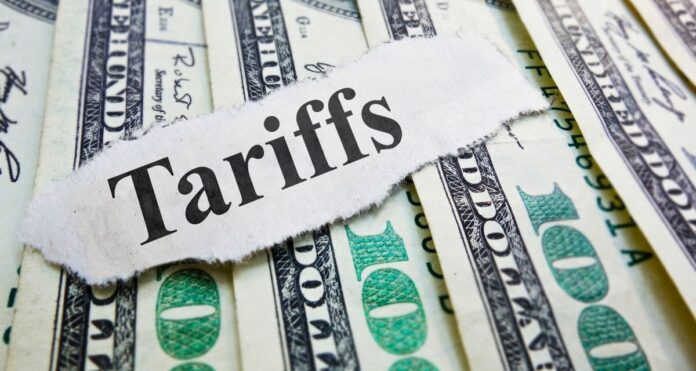Amid choppy geopolitics, Canadian investors have been surprisingly voracious for U.S. government bonds. Even while President Donald Trump’s tariffs and incendiary words fueled tension throughout North America in April 2025, Canadians were actively snapping up U.S. Treasuries in record quantities. Their behavior paints a nuanced portrait which shows one of economic pragmatism in the face of political tension.
A Paradox in Action
Trump’s recent tariff threats, framed in the language of “reciprocal trade,” also set off outrage among Canadian citizens and companies. Boycotts broke out throughout consumer markets. From whiskey to Teslas, everything became subject to Canadian pushback. Cross-border visits fell. And yet, even as Canadians vented their fury, they invested a record $9.2 billion in U.S. government debt in April which is the largest single-month buy since November 2023.
Why? The reason is interest rate dynamics. As most countries, including Canada, have started to cut rates to spur slowing economies, the U.S. Federal Reserve is still in limbo. That void has rendered American Treasuries specially appealing. To investors, returns are more important than politics.
The Bond Selloff’s Hidden Sting
Ironically, while Canadians invested heavily in U.S. bonds, the aggregate value of their holdings fell by $58 billion. The apparent paradox can be attributed to a precipitous selloff in long-term bonds in April. Bond prices fell, yields increased, and valuations plummeted. Canada fared worse than any other large foreign holder of U.S. debt.
Diverging Monetary Policies
At the heart of the issue is a growing rift between central banks. The Bank of Canada has cut rates by 225 basis points over the past nine months, easing monetary conditions to support growth. The Federal Reserve, in contrast, has held its benchmark steady throughout 2025, after trimming rates modestly late last year.
Through mid-June, the 10-year U.S. Treasury yield was at 4.38%, whereas Canada’s stood at 3.30%. For Canadian investors, that premium is attractive, if they are able to hedge out a weakening U.S. dollar.
Rob Haworth, an investment strategist with U.S. Bank, put it succinctly: “There’s this gap forming between the Fed on hold and the rest of the world cutting. Treasuries are attractive again if you can manage the currency risk.”
More Than a Numbers Game
The increase in Canadian purchases highlights a larger trend: international demand for U.S. debt continues to be incredibly robust. At the close of January 2025, Canada held $351 billion worth of Treasuries. That number jumped to $426 billion in March before falling back to $368 billion in April.
But these top-line figures are deceptive. Federal Reserve economists explain that net buying does not necessarily correspond to valuation changes. Occasionally, investors acquire more while the market value of them decreases. That was Canada’s precise situation. More bonds were purchased, but their value decreased due to decreasing prices.
This also challenges a common assumption: that holdings alone signal foreign confidence. In truth, monthly swings often say more about market mechanics than investor sentiment.
The Risks of Foreign Retraction
Overseas investors own about 30% of the U.S. Treasury market. Their purchases are essential in keeping America’s ability to borrow and pay low interest rates. Any suggestion that foreign demand is losing steam causes alarm. Foreigners backing off means yields need to increase to find new purchasers. That makes mortgages, company loans, and consumer credit more expensive as well.
While the Canadian April drop in value was sensational, other indicators suggest a general cooling off. Government institutions such as sovereign wealth funds and central banks were net purchasers in April. But by May and June, their New York Fed holdings had fallen by $48 billion.
This pattern caused Bank of America strategists to issue warnings of “cracks” in foreign demand.
Currency Flows vs. Debt Allocations
However, panic is not called for. The fall of the U.S. dollar in 2025 has been steeper than any actual selloff in Treasuries. As Haworth noted, “Trade shocks appear first in currency flows. Changes in Treasury allocation are slower.” That is to say, foreign governments and banks are not running away yet.
Canadian investor behavior in April confirms this perception. In defiance of tariffs, volatility, and anti-Americanism in their home country, they cared most about yield. They wagered on fundamentals over proximate politics.
Conclusion: A Calculated Contradiction
Canada’s shopping spree in April 2025 demonstrates a compelling disconnect. Tariffs and trade wars were front-page stories. Prime Minister Mark Carney and President Trump traded insults at the G7. Yet, below the surface, money traveled the opposite way.
The episode shows how world finance usually thwarts political theater. When central banks diverge, interest rates increase, and markets move, investors behave rationally occasionally in unexpectedly rational ways.
Even during a month when America was least desirable, Canadians invested. That is some lasting testament to the allure of U.S. debt. The world can complain, but for the moment, it still has faith in Uncle Sam with its money.








